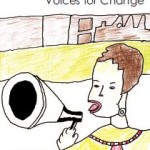
Lumos, the children’s charity and Change a national human rights organisation led by disabled people have been working together on a project to help close institutions for disabled people across central and eastern Europe. The latest publication from the project was the result of a visit to institutions in central and eastern Europe by the lead author, who reports that the young people he saw who lived in those institution appeared have a mix of support needs. He describes one part of the institution as looking clinical and having a smell like a hospital, and felt this might be what UK institution might have looked like 60 years ago.
As the author is a person with a learning disability who grew up in his family home, doing the research offered an opportunity to consider what life might have been like if he had been born in the country he was visiting and whether he might have been placed in an institution. The conclusion he draws is that his life would have been very different under those circumstances.
The institution however had begun the process of helping people to move out and were building new smaller homes within the grounds which were described as modern on the outside, but with the look of a hospital on the inside.
As a result of the visit, the author has spoken to six people who had previously lived in British institutions. These people have agreed to tell their stories in an attempt to help those going through the de-institutionalisation process in Central and Eastern Europe to learn from their experiences.
The key themes that emerge from the stories are that there were some people who had liked their lives in the institution, but this was framed in terms of the friends they had and the people they knew. Also, that people felt they did not have enough information about the closure and the move and that often, they felt rushed and not ready when the time came to move. However, they all describe a wider range of things they are now doing and skills they have learnt.
The author reflects on his own story and compares this to that of those people who shared their stories to help those professionals in the countries the project is working in who are moving people out of institutions or planning to do so.
The author makes a number of recommendations, based on people’s experiences:
1. People leaving institutions need accurate, appropriate and sufficient accessible information to make informed choices.
2. People leaving institutions should be included as much as possible through person centred planning and involvement
3. People must be respected, make their own choices and exercise their rights
4. People have the right to have personal space and privacy.
5. Include people in the community – plan to help people keep in touch with each other
6. Offer support to develop life skills, social skills and to become active members of their communities.
7. Put in place an accessible complaints policy
8. Ensure staff are fully trained in the social model of disability, person centred working and hate crime awareness
9. Encourage peer-to-peer support to help build confidence.
The report also carries a number of useful links to web pages with further Information
Leaving Institutions: Voices for Change, Webster S and Ali J Supported by Tsankova I, Change
